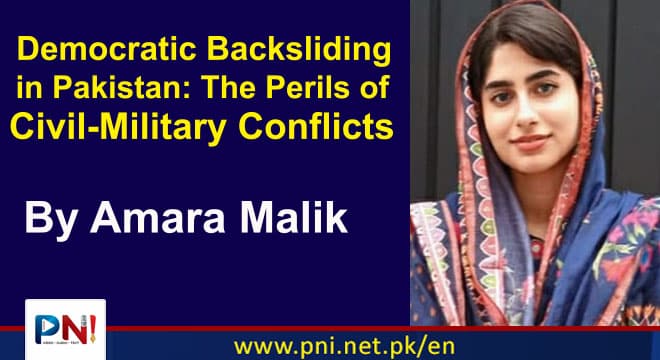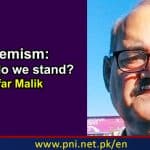The existing political crisis that emerged after the ouster of Imran Khan in 2022, as a result of his failure to abstain the no confidence motion against him, was not a new addition to Pakistan’s political history. It was just a continuation of a series of political crisis that Pakistan has been facing since its inception or more specifically since Quaid e Azam died.
This persisting issue has caused Democratic Backsliding in Pakistan.
There are multiple reasons for the persistence of this issue like the Incompetent Leadership and Civil-Military Conflicts.
During the time when Quaid e Azam died, Pakistan was drowned in a number of issues from social, economic to political issues. In order to resolve these issues, a strong and competent leadership was required which Pakistan didn’t have after Quaid e Azam because Jinnah’s death caused more than a leadership vacuum in the country. Adding fuel to the fire, due to its turbulent political background, the nation has alternated between protracted military rule and fragile civilian democratic regimes.
Because of this the situation got more worst and every coming leadership had to face the consequences.
For almost half of the country’s existence, Pakistan has been directly ruled by the military that has repeatedly intervened to arrest the development of democracy in the country. Not even once an elected government got a chance to complete it tenure peacefully and transfer it to another elected government, specifically between 1947 to 2012. Even if not in government they have maintained their firm grip on Pakistani politics. The roots of current civil military relations can be traced back to 1955 when Iskander Mirza was appointed as the last Governor General and in 1956 the first President of Pakistan. Then in 1958, he staged a coup d’état by abrogating 1956 constitution and declaring Martial Law.
From here continues a series of democratic struggle of Pakistan. In 1958, Ayub Khan became the 2nd President of Pakistan and his tenure was a disaster to Pakistan’s economy as military rooted itself in Pakistan’s business and Industrial sector for which the term Milbus was used by Ayesha Siddiqa.
After Ayub, continuing the military rule Yahya Khan became the 3rd President of Pakistan and after him finally a democratically elected government of PPP led by Zulfiqar Ali Bhutto came into power in 1971. But, the military curse that was broken in 1971 was again confounded through 1977 coup, when General Zia ul Haq came into power by overthrowing the elected government of PPP under Zulfiqar Ali Bhutto. Moreover, Zia also transformed the country’s first democratically crafted parliamentary constitution of 1973 in to semi presidential hybrid. This move was to counter the PPP-led Movement for Restoration of Democracy (MRD) as it gave more powers to the President and weakened the Prime Minister. This tussle did not end even after Zia’s death in a plane crash as three elected governments, two of PPP led by Benazir Bhutto (1998-1990, 1993-1996) and one of PML(N) led by Nawaz Sharif (1990-1993), were prematurely toppled by military by using presidential decrees. As the military-backed president intervened to remove elected administrations during post-1988 renaissance of democracy and the ensuing “democratic decade,” with none of them being allowed to serve out their full terms.
The pervasive establishment was able to control politics and threaten democratic rule because of vicious rivalries between political opponents and the intolerance for the opposition.
And again under General Pervez Musharraf in 1999, the civilian government of PML(N) was overthrown due to a rise in civil military tensions over the Kargil War in India that was initiated by the military. However, an improved record was set by a subsequent democratic period that started in 2008, during which political leaders shown respect for each other’s civil freedoms and tolerance, and the media was allowed to operate freely in a reasonably open and free atmosphere. Pakistan finally broke its zero democratic turnover curse in 2013 when PPP completed its government of five years without any military intervention and passed its power to constitutionally elected PML(N).
Unfortunately, the election of 2018 ushered to a period of hybrid governance that is still operating today. With the adoption of the hybrid system, which has seen the military establishment take on a larger role in politics, government, and even the economy, the post-2018 era has witnessed democratic retreat and reversals.
Alongside this, there have been media censorship, opposition leaders facing politically driven corruption charges, political personalities and activists being imprisoned, disobedience to the law, and marginalization of parliament.
Summing it up, it was accurate for the Pakistan Institute of Legislative Development and Transparency to characterize the period that concluded with the dissolution of parliament as one of the democratic declines as opposed to democratic consolidation. Is the future going to be any different? Till now the answer to this question seems to be no.
About the Author: Amara Malik is a researcher and critical analyst at PolicyEast, pursuing her degree of IR from NDU.








